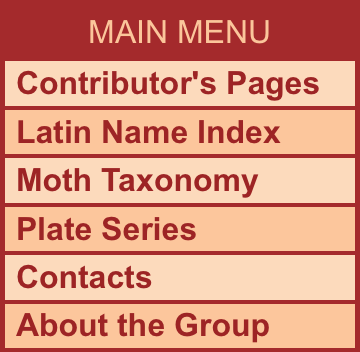990298n –
19298 ulula
Borkhausen, 1790
|
|
|
| Photographs are the copyrighted property of each photographer listed. Contact individual photographers for permission to use for any purpose. |

Large Map & Chart
Report Errors
About Maps
|
| Distribution: |
Palaearctic distribution, including Iran and Greece; not found in North America north of Mexico. |
Seasonality
and Size: |
Forewing length ranges 10-11mm |
Larva and
Host Plants: |
Larvae feed on Allium cepa (onion) and A. sativum (garlic).
Larvae are pink, with yellow-orange on the underside, extending to just below the spiracles. Very fine, poorly visible setae.. (see references) |
Description/
Field Marks: |
Forewings tan with variable white or cream colored markings, and at least 2 visible strigulae near apex; can have several more costal strigulae visible. Forewing fringe white or cream with 6-7 tan spots. Hindwing tan and can have either concolorous fringe, or cream colored fringe with 6-7 tan spots. Visible spots (strigulae) on the hindwing and number of visible costal strigulae may be a sexually dimorphic character (male with spots and greater than 3 costal strigulae visible). Males with pectinate antennae. |
| Similar Species: |
- Forewing pattern is distinct, although rubbed specimens may resemble Comadia henrici although this species tends to be slightly larger (male=12-15mm, female 16-20mm) and without the tan spots on the forewing fringe. C. henrici is also known for having the longest epiphysis in the genus, being greater than one half the pro-tibia length. The epiphysis in Dyspess ulula is equal to or slightly less than the length of the pro-tibia. This is a reliable character to distinguish these species.
|
| Synonymy: |
ulula Borkhausen, 1790 |
|
| References (Caution: DNA barcoding at BOLD provides evidence of relatedness, not proof of identification; some BOLD specimens shown may not be sequenced.) |
- (1) Natural History Museum: HOSTS- website
- (2) Brown, R. L. 1975. The North American Comadia (Cossidae). Journal of Research on the Lepidoptera. 14:4
|
|
Photographs are needed for this species. |




